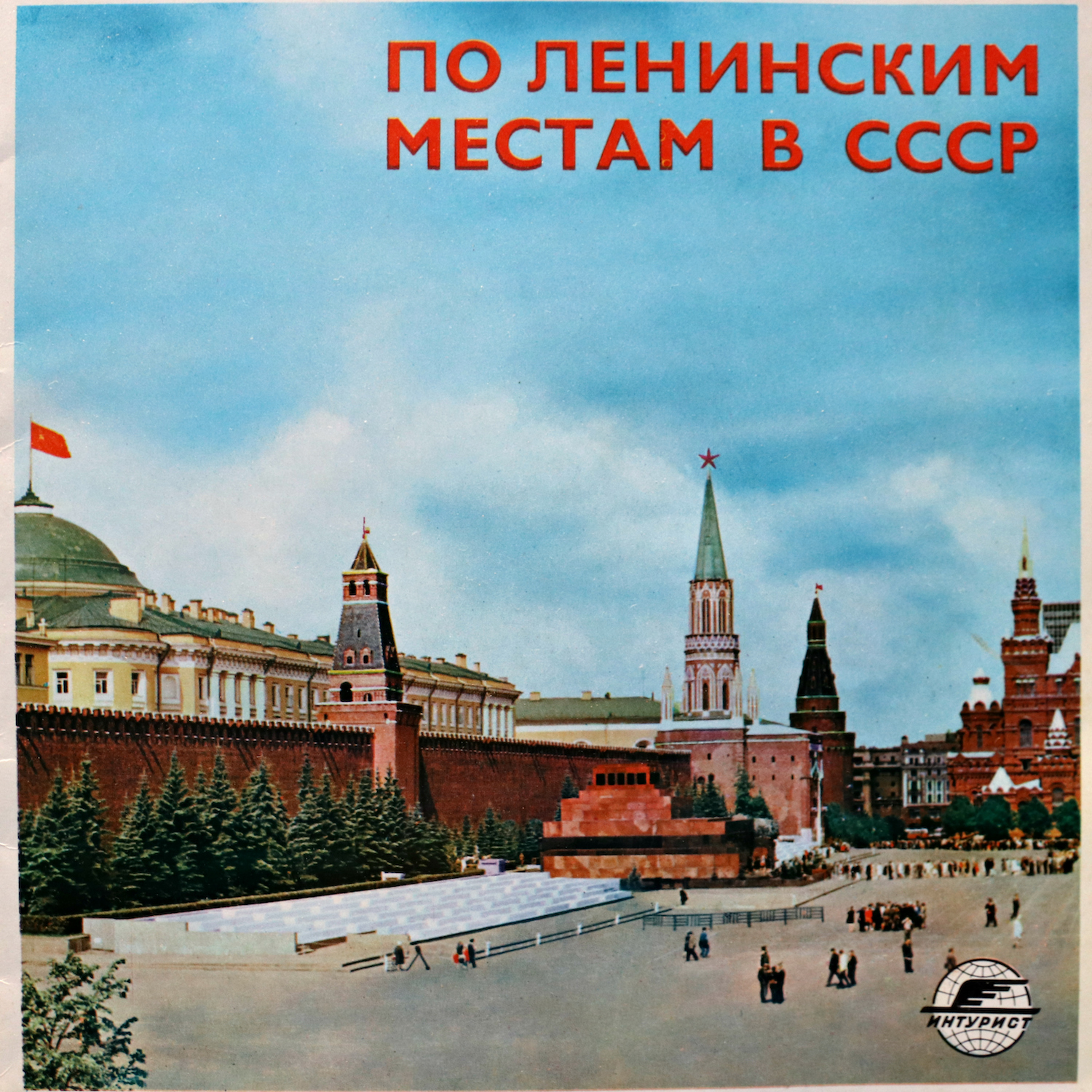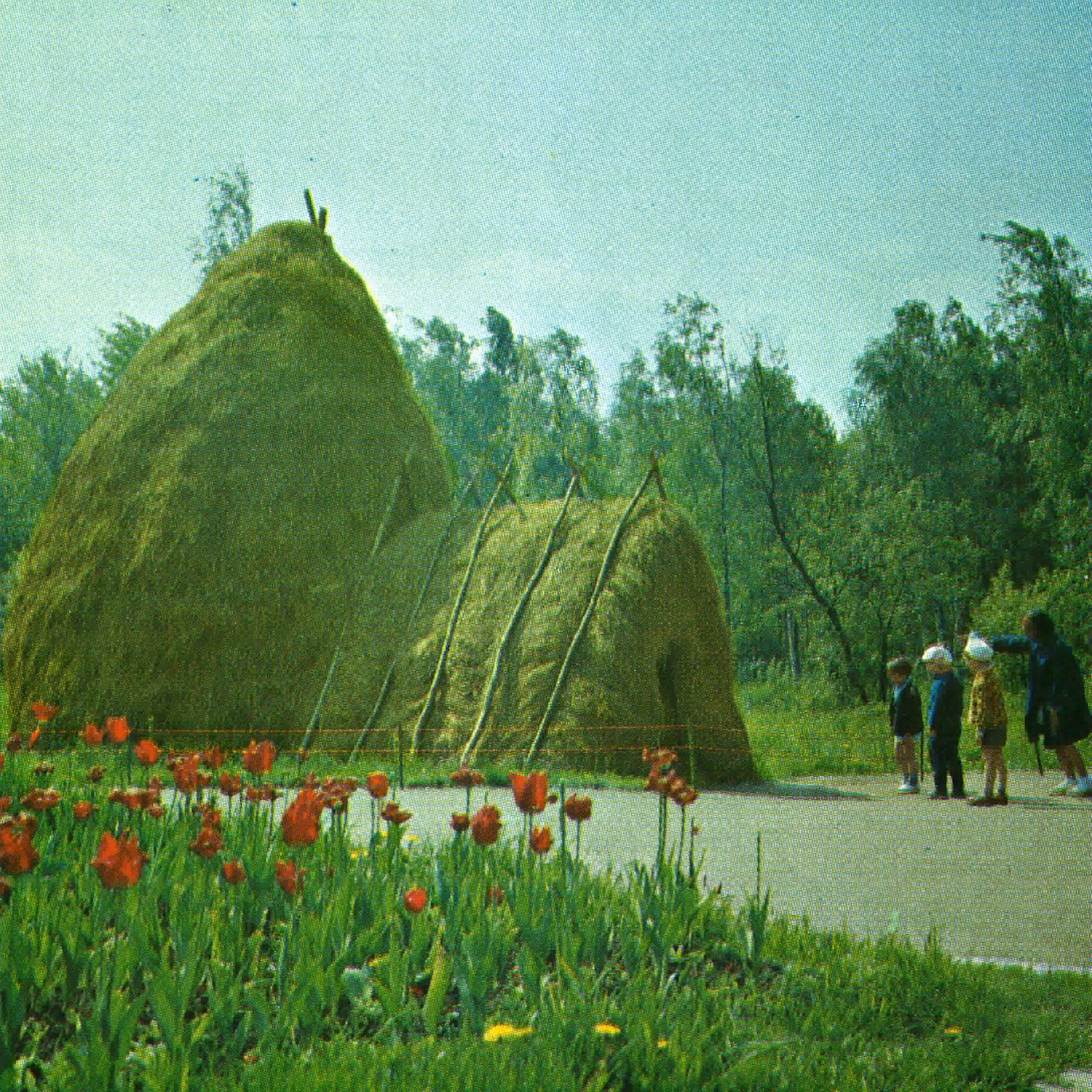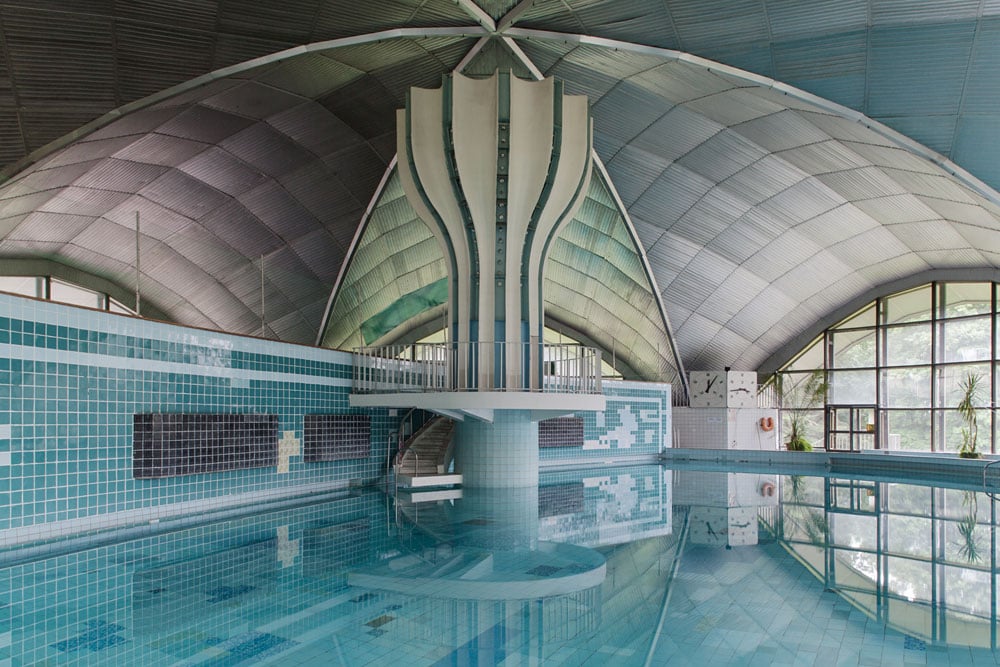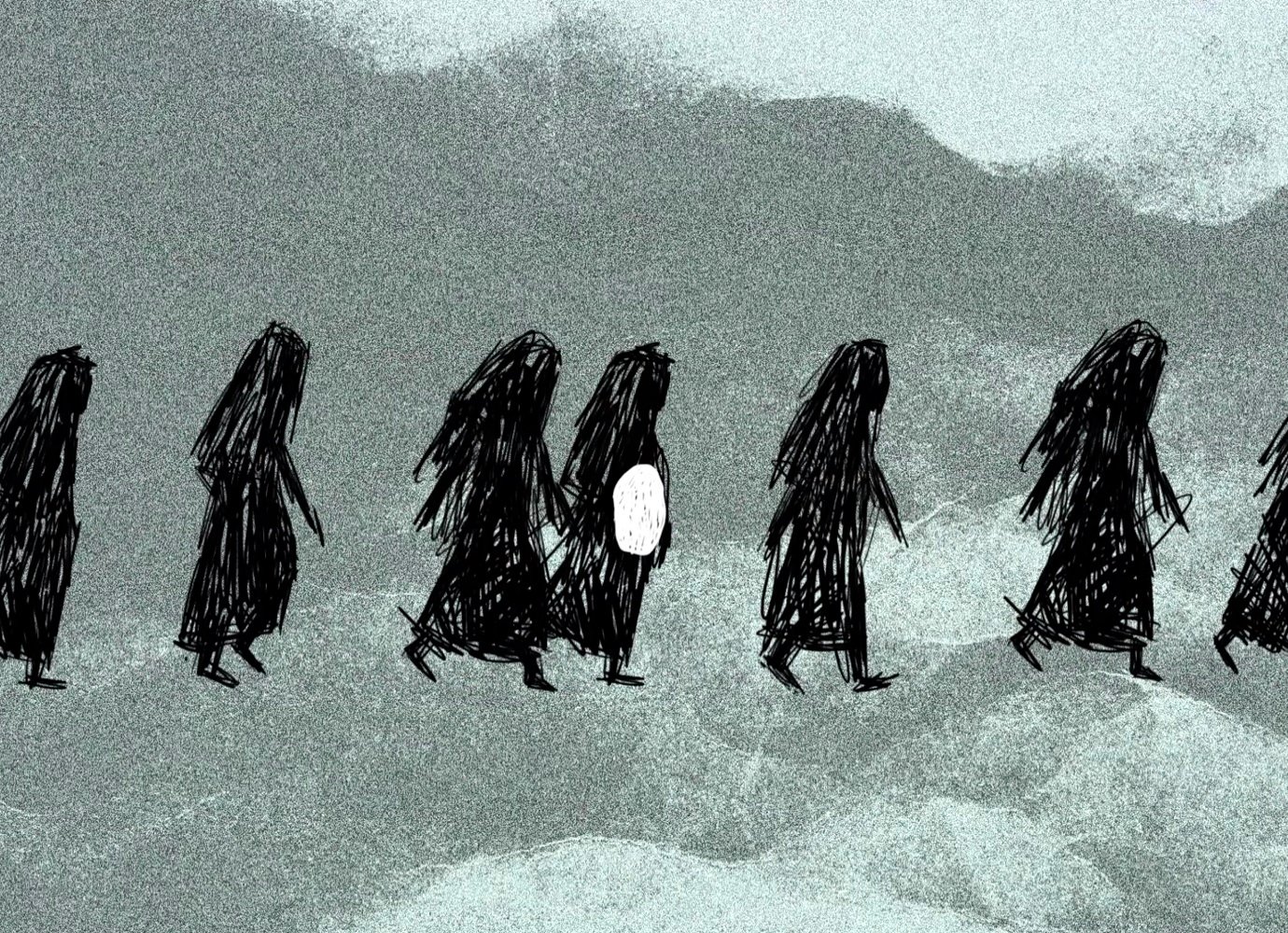Inside the little-known world of the early Soviet Union’s Lenin-fuelled tourism industry
As the Soviet Union began to establish itself after the turmoil of revolution, officials ran into a problem: how could they promote travel and tourism in a way that still filled the country's work-centric ideals? The answer lay in the many homes, study halls, and hidey-holes of one man: Vladimir Lenin.
Standing in the old resort town of Razliv, 20 miles from St Petersburg, a snowy haystack looms silently in the clear February light, guarded by a fence, a lock, and key. A large bust of Lenin lies on the ground somewhere nearby. The haystack used to be one of the Soviet Union’s great tourist attractions — a carefully reproduced replica of the shelter where Lenin once hid before the revolution. Today, it still pulls in the crowds: Lenin’s Haystack, as it is known, has been tagged several thousand times on Instagram.
It also stands, however, as a monument to the era of Lenin tourism, when millions of Soviet citizens were moved thousands of miles to enjoy their hard-won leisure time honouring the late leader.
The First World War, the 1917 Revolution, and the Civil War which followed, all wreaked havoc in Russia. It was only at the dawn of the 1920s, when turmoil had finally begun to settle and a new society to emerge, that Soviet tourism was finally created.
Lenin monument at Razliv crossroads. Image: Ville-Juhani Sutinen
Right from the beginning, the officials tasked with forging tourism for the masses wanted something different from the “bourgeois” tourism that had developed in both the West and the Russian Empire. Travelling was to be used as a tool in the building of communism.
But how? There was much discussion on the aims and means of “proletarian tourism”, as it was dubbed. On one hand, the new Soviet society fetishised labour, so lazy vacation was out of the question. On the other, workers needed rest to be productive. Travel needed to be instructive — or so thought the know-it-all politburo. As the 1920s drew on, Soviet tourism was divided into two branches. There was “productive rest” in workers’ sanatoriums, and “active tourism”, with its mission to educate.
Lenin tourism came to be part of the latter branch. When Lenin died in 1924, he was sacralised as a saint of the revolution; his image spread across the country. The Lenin Mausoleum was built in Moscow. Originally a wooden memorial site, it was redesigned in 1929 into its current form as a shrine that later became a major attraction. British travel writer Robert Byron visited the embalmed leader in 1931 and wrote that his fingers were “like the petals of a magnolia flower”. Statues of Lenin began to rise here and there, with the many places the leader had lived in or briefly visited gaining a sudden, almost holy standing. Before long, ordinary Soviet citizens were being taken to visit these Lenin-related sites, as well as foreign dignitaries being shown European Russia and Siberia, where Lenin has been in exile.
Lenin tourism, however, wasn’t the most important line of proletarian tourism. Lenin-related attractions were usually visited alongside standard Soviet sights, such as factories, dams and other marvels of industry. But as Soviet tourism evolved in the 1930s and especially after the war, Lenin trips became bigger, better – and kitschier. By now, visits were arranged either by All-Union Voluntary Society for Proletarian Tourism and Excursions, OPTE (for Soviet citizens), or All-Union Society for Cultural Relations with Foreign Countries, VOKS (for foreign guests).
One theme was to integrate Lenin-related activities into the prevailing trends of the time. By the 1930s, river cruises had become popular, particularly along the Volga. After 1937, when the Moscow–Volga Canal (built by forced labour) was opened, visitors could embark in Moscow, float leisurely via the canal to the Volga river, and onwards to Stalingrad, stopping in bigger ports along the way. Of course, no cruise would be complete without Lenin, and boats would usually stop at the revolutionary’s birthplace in Ulyanovsk (formerly Simbirsk), which abounded in must-see Lenin sights.
Other projects were also underway. The former Moscow City Hall was transformed into a huge Lenin museum, hoarding all the Lenin-related items it could salvage. When US writer John Steinbeck visited the museum, he joked that Lenin must have never thrown anything away.
The still-celebrated Razliv haystack where Lenin hid during the days of the provisional government, was also gaining in momentum. By 1927, a granite memorial to the “shalash” (translated as “hut”, rather than “haystack”) was erected nearby. Later the house, where Lenin had been a guest before diving into the depths of the straw bales for good, was also museumised.
These museums helped to breed a new generation of legends around Lenin himself. According to the museum charged with caring for Lenin’s haystack, the owner of the house (and, indeed, the haystack) Nikolai Emelyanov, was a shrewd man. After giving Lenin his permission to hide on his land, Emelyanov tucked everything that the revolutionary needed to continue his work amongst the straw. It’s said that Lenin began work on his book, State and Revolution, among the bales. Lest somebody should spot the familiar bald-headed and goateed Bolshevik, Emelyanov also spread the word that he had hired a Finnish peasant to do the mowing — not an unusual thing at the time — and Lenin shaved his beard and disguised himself as a Finn. The razor used by Lenin to get rid of his beard was also displayed at the Lenin museum in Moscow.
Officials tasked with forging tourism for the masses wanted something different. Travelling was to be used as a tool in the building of communism
The real boom in Lenin tourism, however, began after the Second World War. Although proletarian tourism in its original form was now thing of the past, a more relaxed style tourism was growing fast. For a while, Stalin tourism sat alongside Lenin trips — in the 1950s, for example, both Lenin and Stalin-themed tours were on offer at Moscow’s Tretyakov Gallery at Moscow — but Stalin attractions disappeared soon after the leader’s death in 1953, apart from the Stalin museum and statue in his hometown of Gori in modern-day Georgia.
Tourists were not forced to visit Lenin-related sights, but they were an inevitable part of the officially-approved ready-made package tours that dominated Soviet tourism. Trains and coaches were the preferred method of transportation for such groups. If a group spent a week in Leningrad, at least one day would be dedicated to Lenin-themed attractions, including the infamous Razliv haystack. A lack of choice, as well as the relatively new availability of tourism for many Soviet citizens, meant that any displeasure about these itineraries were fairly muted. Some tourists went along just to be done with it, waiting to uncork their bottle of Zhiguli beer in the evening. Others were sincerely interested in the historic locations and artifacts.
A Soviet postcard from the city of Ufa
In 1970, the centenary of Lenin’s birth, Lenin tourism peaked. The almighty Soviet tour operator, Intourist, printed the Russian-language brochure Po Leninskim Mestam v SSSR (Across the Lenin-Related places of the Soviet Union) introducing the many, many cities and sites with a connection to the leader. A Leningrad guidebook from the same era mentioned that there were almost 250 Lenin-related attractions. In 1969, a new museum building was opened close to the Razliv haystack.
But generally, Lenin tourism became more casual from 1970s on. In Razliv, for example, visitors could have a picnic nearby during the summer, while Pioneer and Komsomol groups took ski trips there in winter.
But if this more relaxed approach from the government meant that Lenin’s best-loved sites were appreciated with less vigour by Soviet guests, it also meant that foreign tourists, both from other socialist countries and even the West, could travel more easily throughout the Soviet Union. They were also able to sample the delights of Lenin tourism for themselves — although they usually visited only a few attractions. Delegations from Finland and Japan were able to take in Lenin’s haystack. Nikita Khrushchev himself dropped by in 1961, while Cuban revolutionary leader Fidel Castro also made the trip to Razliv in 1963. This also went both ways: with greater travel rights, Soviet citizens were also able to partake in Lenin tourism abroad. Tours were usually taken to the Eastern Bloc countries or Finland, politically between east and west. In Finland, Soviet tourists stopped to see Lenin statues – most of which the Soviet Union had given as presents to Finland – and the only Lenin museum outside the Soviet Union at Tampere, still operating today.
Lenin tourism did not die with the end of the Soviet Union. The revolutionary’s embalmed body (presumably real) is still lying under a glass. The Moscow Lenin museum is gone, but the exhibits once found within are scattered here and there — the aforementioned razor, for example, is to be found at the Alliluyevy Apartment Museum in St Petersburg. Lenin’s rooms in Smolny and in the revolutionary headquarters of 1917, which now houses the Museum of Political History of Russia, are open to visitors. There are still more than 6,000 Lenin statues in Russia. Some of these attractions have become gradually more popular alongside the Soviet nostalgia boom.
A bust of Vladimir Lenin in Ulan-Ude. Image: Dudergofer/Wikimedia Commons under a CC licence
Back in Razliv in 2020, it has been more than 100 years since Lenin hid among the hay, and 93 years since the haystack was preserved. It still stands, although it has changed through the years: a postcard from 1960s shows that it used to stand on the other side of the granite monument, while in one brochure from 1970s, the haystack seems much bigger. Nowadays, the haystack has its own page in Russian social media site VKontakte. A shallow layer of snow covers the hay and the bald head of Lenin bust, forming a delicate white toupee. Someone has thrown a snowball at his forehead. Silence reigns, not him.
One is inclined to some amount irony here. But is there really much to laugh about? In Los Angeles, tourists flock to see the houses of celebrities, dead and alive. Many will say it is an ironic gesture — although many visitors to haystack must have said the same. We have to grant some sense of humour to the ordinary Soviet people, even if Soviet state lacked did not. Many people came here with jocular smile on their face, just like tourists everywhere.
Even now, there’s a certain tongue-in-cheek attitude here. In the Shalash restaurant, situated by the parking lot of the haystack museum, visitors can order a meal called “conspiracy”. It is made of fish covered under thick sauce – just like Lenin, hiding under the hay.




